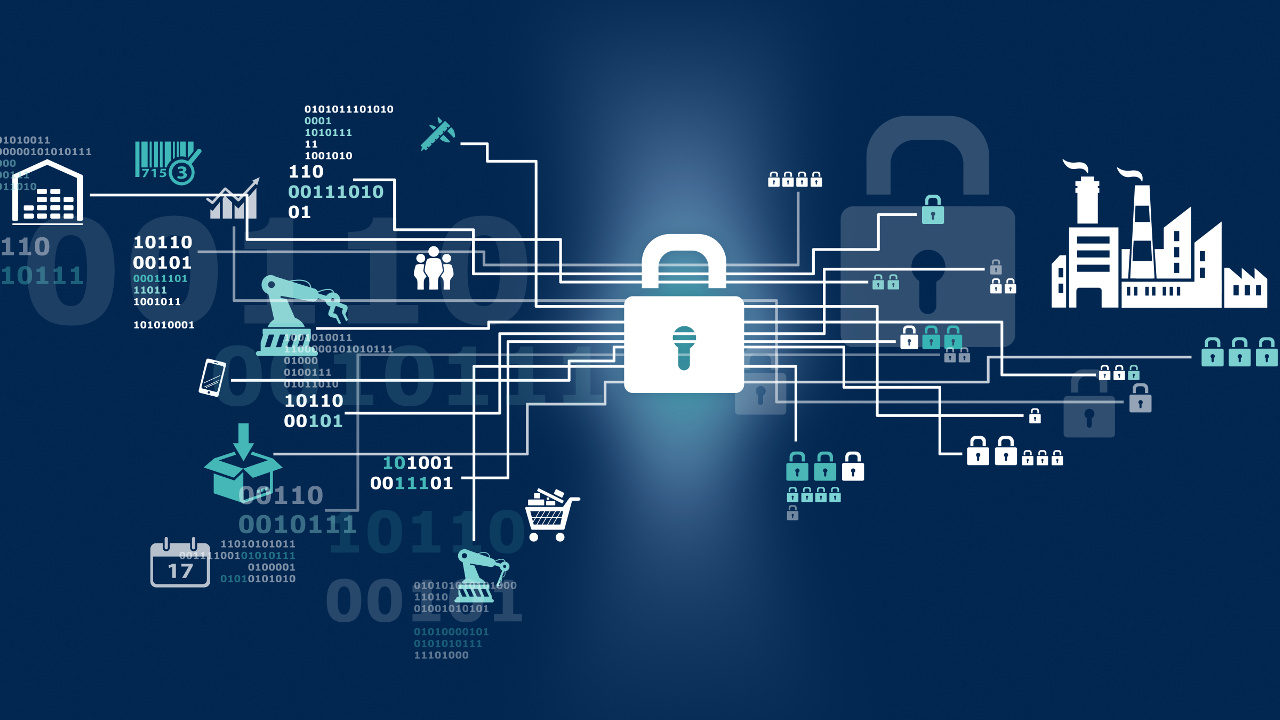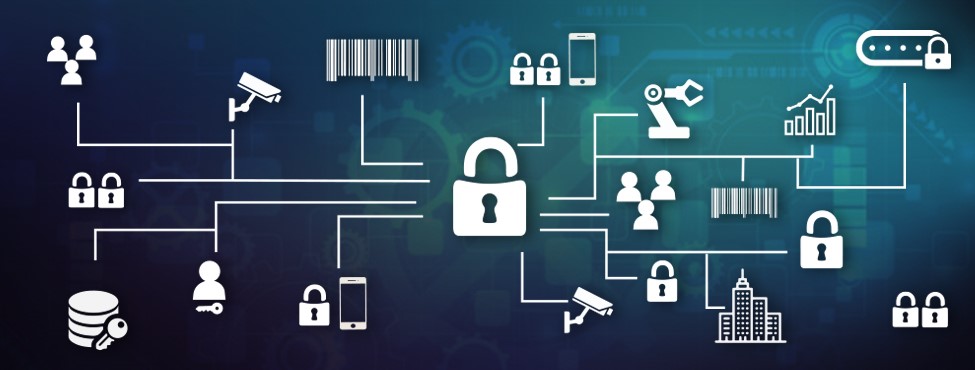Security in a Connected World: Navigating IoT Risks
Introduction
In an era dominated by interconnected technologies, the rise of the Internet of Things (IoT) has heralded a paradigm shift in how we engage with the world. This introduction delves into the accelerating significance of IoT, exploring its pervasive influence on our daily lives and the pressing need for robust security measures to safeguard this dynamic digital landscape.
The Growing Significance of IoT
The Internet of Things, a network of interconnected devices sharing data seamlessly, has grown exponentially. From smart homes to industrial processes, IoT’s influence permeates various facets of our lives. This section elaborates on the expanding significance of IoT, elucidating its transformative impact on diverse sectors.
The Need for Robust Security Measures
With the proliferation of IoT, the need for robust security measures becomes paramount. This subsection emphasizes the critical importance of securing the intricate web of interconnected devices, highlighting the potential risks and consequences associated with inadequate security protocols.

Understanding IoT and Its Impact
Defining IoT in a Connected Landscape
To navigate the risks associated with IoT, a comprehensive understanding is essential. This part elucidates the intricacies of IoT, defining its essence in a connected landscape. From the fundamental concept to the nuances of device interaction, a clear foundation is laid for readers.
The Proliferation of IoT Devices
The IoT landscape is characterized by a staggering array of devices, from household gadgets to industrial machinery. This subsection delves into the proliferation of these devices, examining the diversity and ubiquity of IoT in our daily lives and the challenges posed by managing such a vast ecosystem.
Benefits and Challenges of IoT
Unlocking Opportunities through Connectivity
The promise of IoT lies in its capacity to unlock unprecedented opportunities through seamless connectivity. Expanding on this aspect, the article explores the positive implications of IoT, shedding light on how interconnected devices can enhance efficiency, convenience, and overall quality of life.
Security Challenges in the IoT Ecosystem
Yet, with these opportunities come unique security challenges. This section addresses the darker side of IoT, examining the potential vulnerabilities and threats inherent in its ecosystem. By identifying these challenges, the article aims to foster a deeper understanding of the security landscape surrounding IoT.
The Landscape of IoT Security Threats

Cybersecurity Threats in the Connected World
The connected world provides a fertile ground for cybersecurity threats to flourish. This segment scrutinizes the various cyber threats that lurk within the interconnected matrix of IoT, shedding light on the sophisticated tactics employed by malicious actors to exploit vulnerabilities.
Common Vulnerabilities Exploited by Attackers
To fortify our defenses, understanding the common vulnerabilities exploited by attackers is paramount. This subsection dissects these vulnerabilities, ranging from weak passwords to insecure software, providing readers with insights into potential entry points for cyber threats.
Real-world Examples of IoT Security Breaches
Case Studies Highlighting IoT Vulnerabilities
Learning from real-world examples is instrumental in comprehending the gravity of IoT security breaches. This section delves into case studies that highlight vulnerabilities, offering tangible instances of compromised IoT devices and the ensuing consequences.
Lessons Learned from Past Incidents
Each security breach provides invaluable lessons. This subsection distills the wisdom gained from past incidents, elucidating the importance of proactive security measures and the evolving nature of cybersecurity in the IoT landscape.
The Role of Encryption in IoT Security

Importance of Encryption in Protecting Data
Encryption emerges as a stalwart defender in the realm of IoT security. This part expounds on the critical role of encryption in safeguarding sensitive data, emphasizing its significance in maintaining confidentiality and integrity during data transmission.
Implementing Strong Encryption Protocols
However, not all encryption protocols are created equal. This subsection explores the nuances of implementing robust encryption protocols, ensuring that the protective shield around IoT data remains impervious to evolving cyber threats.
Securing IoT Networks
Strengthening Network Security for Connected Devices
As the backbone of IoT, networks demand fortified security measures. This segment scrutinizes the strategies to strengthen network security, including the deployment of firewalls and intrusion detection systems, ensuring the resilience of pathways connecting IoT devices.
Best Practices for IoT Network Protection
Implementing best practices is integral to crafting a secure IoT network architecture. This subsection elucidates practices such as network segmentation and regular security audits, forming the bedrock of a proactive defense strategy against potential external threats.
Device Authentication in the IoT

Ensuring the Legitimacy of Connected Devices
Device authentication stands as the sentinel guarding the gates of the IoT realm. This section underscores the significance of ensuring the legitimacy of connected devices through robust authentication mechanisms, preventing unauthorized access and maintaining the integrity of the entire ecosystem.
Two-Factor Authentication in IoT
Taking authentication a step further, the incorporation of two-factor authentication adds an extra layer of security. This subsection explores the intricacies of two-factor authentication in the context of IoT, enhancing our understanding of this powerful security measure.
Securing Data Transmission in IoT
Protecting Data During Transmission
As data traverses the interconnected web of devices, ensuring its protection is paramount. This segment delves into methods for safeguarding data during transmission, such as employing secure communication protocols, ensuring the confidentiality and integrity of exchanged information.
Secure Protocols for IoT Data Exchange
The choice of protocols for data exchange is critical. This subsection explores secure protocols like MQTT or CoAP, shedding light on their efficacy in facilitating the efficient and secure transmission of IoT data across the interconnected landscape.
The Human Element: IoT Security Training
Educating Users on IoT Security Best Practices
In the interconnected world of IoT, users play a pivotal role in maintaining security. This part advocates for comprehensive training on best practices, empowering users to make informed decisions and reducing the risk of security incidents stemming from human-related vulnerabilities.
Raising Awareness to Mitigate Human-related Risks
However, training is only part of the equation. Raising awareness about potential risks and threats associated with IoT usage fosters a culture of cybersecurity vigilance, transforming users into a collective shield against social engineering and other human-centric vulnerabilities.
Updates and Patch Management for IoT Devices

Importance of Regular Updates in IoT Security
The dynamic nature of the IoT landscape necessitates regular updates. This section underscores the importance of consistent updates to ensure that devices remain resilient to the latest security vulnerabilities, creating a proactive defense mechanism against potential threats.
Strategies for Effective Patch Management
Yet, effective patch management requires finesse. This subsection explores strategies such as automated updates and timely deployment, ensuring that vulnerabilities are addressed without disrupting the functionality of IoT devices.
Privacy Concerns in the IoT Era
Balancing Connectivity and Individual Privacy
As IoT permeates our lives, significant privacy concerns arise. This part delves into the delicate balance between connectivity and individual privacy, exploring how to harness the benefits of interconnected devices without compromising personal data and rights.
Regulatory Frameworks Addressing IoT Privacy
Navigating the evolving landscape of privacy in the IoT era involves understanding regulatory frameworks. This subsection explores existing and emerging regulations like the GDPR, shedding light on the legal protections that govern privacy in the interconnected world.
Building a Secure IoT Ecosystem
Collaborative Approaches to IoT Security
Securing the IoT ecosystem requires a collaborative effort. This segment explores collaborative approaches, where industry stakeholders share insights and best practices, contributing to the creation of a resilient and secure interconnected landscape.
Industry Standards and Certifications
Setting standards and certifications is integral to establishing a benchmark for IoT security. Delving into industry standards like ISO/IEC 27001 or the NIST Cybersecurity Framework provides a roadmap for developers and organizations to build and verify secure IoT solutions.
The Future of IoT Security
Emerging Technologies in IoT Security
The landscape of IoT security is in a constant state of evolution. This part explores emerging technologies, from Artificial Intelligence to blockchain, shedding light on how innovation can be harnessed to stay ahead of potential threats and fortify the security of the interconnected ecosystem.
Anticipating Future Threats and Solutions
A proactive mindset is crucial in anticipating the future of IoT security. This subsection examines potential threats on the horizon and envisions innovative solutions, ensuring that the IoT ecosystem remains resilient and adaptive to the ever-evolving threat landscape.
Legal Implications of IoT Security Breaches
Liability and Responsibility in the Event of a Breach
In the unfortunate event of a security breach, understanding liability and responsibility is paramount. This segment explores the legal implications, establishing accountability and laying the groundwork for remediation and prevention in the aftermath of a breach.
Legal Protections and Recourse for IoT Users
For users navigating the aftermath of a security incident, legal protections and recourse are crucial. This subsection analyzes the available legal avenues, empowering users to understand and assert their rights in the complex landscape following an IoT security breach.
Government Initiatives in IoT Security
Policies and Regulations Addressing IoT Security
Governments wield significant influence in shaping the IoT security landscape. This part explores policies and regulations such as the GDPR or the IoT Cybersecurity Improvement Act, highlighting the global effort to create a secure environment for interconnected devices.
International Cooperation in Tackling Global IoT Threats
In the interconnected world, threats transcend borders. This subsection delves into international cooperation efforts against global IoT threats, emphasizing the importance of a unified approach to cybersecurity to address the challenges posed by the interconnected landscape.
Consumer Awareness and Responsibility
Empowering Users to Make Informed IoT Choices
Empowering consumers to make informed decisions about their IoT devices is paramount. This section provides accessible information and resources, ensuring that users actively contribute to the security of the interconnected landscape by making educated choices.
Taking Personal Measures to Enhance IoT Security
Beyond awareness, this subsection encourages users to take personal measures. From regular device audits to implementing privacy settings, these measures contribute to a safer IoT experience, empowering individuals to actively participate in securing their digital environment.
Conclusion
The Ongoing Evolution of IoT Security
As technology advances, so do the challenges and opportunities in IoT security. This concluding section acknowledges the ongoing evolution, emphasizing the need for continuous adaptation and innovation to stay ahead of emerging threats in the dynamic landscape of interconnected devices.
Call to Action: Collaborative Efforts for a Secure Connected Future
In concluding our exploration of IoT security, a call to action is sounded. This section emphasizes the need for collaborative efforts among users, developers, and policymakers to ensure a collective commitment to building and maintaining a secure connected future. By fostering a culture of shared responsibility, we can navigate the evolving risks of the IoT landscape and collectively shape a secure digital tomorrow.
FAQs: Security in a Connected World – Navigating IoT Risks
What is the primary focus of the blog post?
This blog post delves into the intricacies of IoT security, exploring the growing significance of the Internet of Things (IoT) and providing insights into the challenges and solutions associated with navigating risks in the interconnected landscape.
Why is IoT security important?
IoT security is crucial because the proliferation of interconnected devices introduces unique vulnerabilities. Without robust security measures, these devices become potential targets for cyber threats, compromising data integrity, user privacy, and overall system functionality.
How does the article address the benefits of IoT?
The article explores the positive aspects of IoT, emphasizing its potential to unlock opportunities through seamless connectivity. It highlights how IoT can enhance efficiency, convenience, and overall quality of life.
What are some common IoT security threats covered in the blog post?
The blog post covers a range of cybersecurity threats in the connected world, including unauthorized access, data breaches, and disruptions. It also delves into common vulnerabilities exploited by attackers, such as weak passwords and insecure software.
How does the article approach real-world examples of IoT security breaches?
Real-world examples are presented through case studies, offering tangible instances of compromised IoT devices and the lessons learned from past incidents. This approach aims to provide practical insights into the consequences of security vulnerabilities.
What role does encryption play in IoT security?
Encryption is highlighted as a crucial element in protecting data during transmission. The blog post explores the importance of encryption in maintaining the confidentiality and integrity of IoT data, along with the implementation of strong encryption protocols.
How are IoT networks addressed in the article?
The article addresses securing IoT networks by exploring strategies to strengthen network security for connected devices. It also provides insights into best practices for IoT network protection, including network segmentation and regular security audits.
Why is device authentication important in the IoT ecosystem?
Device authentication ensures the legitimacy of connected devices and prevents unauthorized access. The blog post delves into the significance of robust authentication mechanisms, including the exploration of two-factor authentication in IoT.
How does the article approach the human element in IoT security?
The human element is addressed through the importance of IoT security training. The article emphasizes educating users on best practices and raising awareness to mitigate human-related risks, such as social engineering.
How are privacy concerns in the IoT era discussed in the blog post?
Privacy concerns are explored by delving into the delicate balance between connectivity and individual privacy. The article also examines regulatory frameworks addressing IoT privacy, such as the GDPR, to shed light on legal protections.
What does the blog post say about the future of IoT security?
The article explores the future of IoT security by discussing emerging technologies, anticipating future threats, and emphasizing the need for proactive measures. It envisions a secure connected future through continuous adaptation and collaboration.
How are legal implications of IoT security breaches addressed in the article?
The legal implications of IoT security breaches are discussed in terms of liability, responsibility, and legal protections for IoT users. The article aims to provide insights into the recourse available in the aftermath of a security incident.
What role do government initiatives play in IoT security, according to the blog post?
Government initiatives are explored in terms of policies and regulations addressing IoT security. The article also discusses international cooperation in tackling global IoT threats, highlighting the role of governments in shaping the global IoT security landscape.
How is consumer awareness and responsibility addressed in the article?
Consumer awareness and responsibility are emphasized by empowering users to make informed IoT choices. The article encourages users to take personal measures to enhance IoT security, contributing to a safer and more secure interconnected environment.
What is the main takeaway from the blog post’s conclusion?
The conclusion underscores the ongoing evolution of IoT security, acknowledging the dynamic nature of technology. It issues a call to action for collaborative efforts among users, developers, and policymakers to shape a secure connected future.
Stay Tuned On Our Content
If you’re eager to explore the latest innovations in the realm of IoT, don’t miss our insightful article on IoT Innovations: Shaping the Future of Technology. Discover how groundbreaking technologies are revolutionizing the way we live and interact with the world, setting the stage for a future where IoT plays a central role in shaping our technological landscape.
For a deeper dive into the intricate world of IoT security, we highly recommend checking out the compelling insights shared in IoT Security: Navigating the Risks in a Connected World. Authored by industry experts, this article provides a comprehensive perspective on navigating the risks associated with IoT in our interconnected world, offering valuable insights and strategies to enhance security measures.







Os comentários estão encerrado.